
Japanese literature throughout most of its history has been influenced by cultural contact with neighboring Asian literatures, most notably China and its literature. Early texts were often written in pure Classical Chinese or lit. 'Chinese writing', a Chinese-Japanese creole language. Indian literature also had an influence through the spread of Buddhism in Japan.
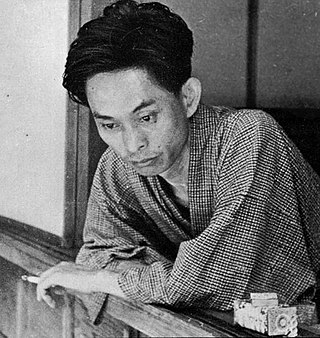
Yasunari Kawabata was a Japanese novelist and short story writer whose spare, lyrical, subtly-shaded prose works won him the 1968 Nobel Prize in Literature, the first Japanese author to receive the award. His works have enjoyed broad international appeal and are still widely read.

Laura Mulvey is a British feminist film theorist and filmmaker. She was educated at St Hilda's College, Oxford. She is currently professor of film and media studies at Birkbeck, University of London. She previously taught at Bulmershe College, the London College of Printing, the University of East Anglia, and the British Film Institute.
In psychology and psychiatry, scopophilia or scoptophilia is an aesthetic pleasure drawn from looking at an object or a person. In human sexuality, the term scoptophilia describes the sexual pleasure that a person derives from looking at prurient objects of eroticism, such as pornography, the nude body, and fetishes, as a substitute for actual participation in a sexual relationship.
Snow Country is a novel by the Japanese author Yasunari Kawabata. The novel is considered a classic work of Japanese literature and was among the three novels the Nobel Committee cited in 1968, when Kawabata was awarded the Nobel Prize in Literature.
The Dancing Girl of Izu or The Izu Dancer is a short story by Japanese writer and Nobel Prize winner Yasunari Kawabata first published in 1926.
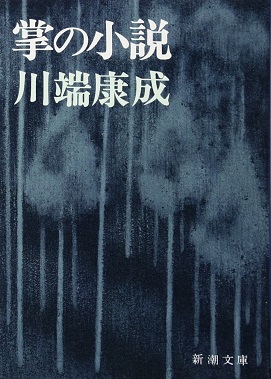
Palm-of-the-Hand Stories is the name Japanese author Yasunari Kawabata gave to 146 short stories he wrote during his long career. The earliest stories were published in the early 1920s, with the last appearing posthumously in 1972. The first Japanese edition to collect these stories appeared in 1971. The title refers to the brevity of the stories – many of which are only two to three pages long – which would "virtually fit into the palm of the hand".
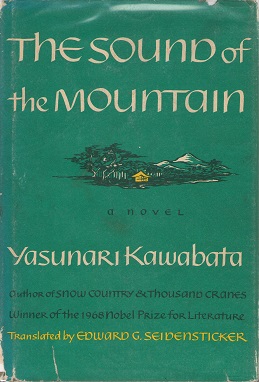
The Sound of the Mountain is a novel by Japanese writer Yasunari Kawabata, serialized between 1949 and 1954, and first published as a standalone book in 1954 by Chikuma Shobō, Tokyo.

Beauty and Sadness is a 1961–63 novel by Nobel Prize-winning Japanese author Yasunari Kawabata. The novel is narrated from the present and past perspective of the characters and how they differed from each other's point of view. A novel that provokes the mind and examines the relationship between life events, it is considered one of Kawabata's best works, though it has on occasion been criticised for its depictions of female homosexuality.
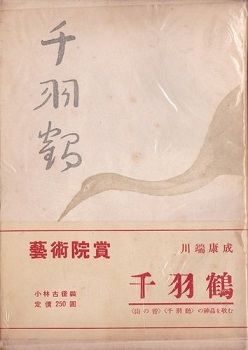
Thousand Cranes is a novel by Japanese author Yasunari Kawabata which first appeared in serialised form between 1949 and 1951 and was published as a book in 1952.
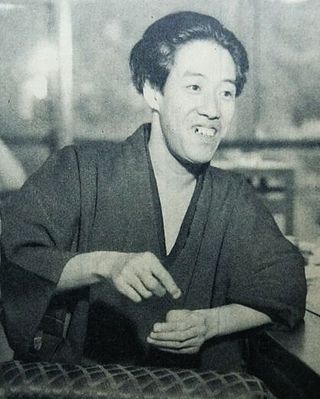
Kosuke Gomi was the pen-name of Yasusuke Gomi, a Japanese novelist active during the Shōwa period of Japan. He is primarily known for his popular fiction on historical themes.

In critical theory, philosophy, sociology, and psychoanalysis, the gaze, in the figurative sense, is an individual's awareness and perception of other individuals, other groups, or oneself. The concept and the social applications of the gaze have been defined and explained by existentialist and phenomenologist philosophers. Jean-Paul Sartre described the gaze in Being and Nothingness (1943). Michel Foucault, in Discipline and Punish: The Birth of the Prison (1975), developed the concept of the gaze to illustrate the dynamics of socio-political power relations and the social dynamics of society's mechanisms of discipline. Jacques Derrida, in The Animal That Therefore I Am (1997), elaborated upon the inter-species relations that exist among human beings and other animals, which are established by way of the gaze.
The bibliography of Kimitake Hiraoka, pen name Yukio Mishima, includes novels, novellas, short stories and literary essays, as well as plays that were written not only in a contemporary-style, but also in the style of classical Japanese theatre, particularly in the genres of noh and kabuki. However, although Mishima took themes, titles and characters from the noh canon, he included his own twists and modern settings, such as hospitals and ballrooms, which startled audiences who were accustomed to the long-settled originals.

In feminist theory, the male gaze is the act of depicting women and the world in the visual arts and in literature from a masculine, heterosexual perspective that presents and represents women as sexual objects for the pleasure of the heterosexual male viewer. In the visual and aesthetic presentations of narrative cinema, the male gaze has three perspectives: that of the man behind the camera, that of the male characters within the film's cinematic representations; and that of the spectator gazing at the image.
The female gaze is a feminist theory term referring to the gaze of the female spectator, character or director of an artistic work, but more than the gender it is an issue of representing women as subjects having agency. As such, people of any gender can create films with a female gaze. It is a response to feminist film theorist Laura Mulvey's term "the male gaze", which represents not only the gaze of a heterosexual male viewer but also the gaze of the male character and the male creator of the film. In that sense it is close, though different, from the Matrixial gaze coined in 1985 by Bracha L. Ettinger. In contemporary usage, the female gaze has been used to refer to the perspective a female filmmaker (screenwriter/director/producer) brings to a film that might be different from a male view of the subject.
Woman of the Lake is a 1966 Japanese drama film directed by Yoshishige Yoshida. It is based on Yasunari Kawabata's novel The Lake.
Kiyoko Murata is a Japanese writer. She has won the Akutagawa Prize, the Noma Literary Prize, and the Yomiuri Prize, among other literary prizes. The Government of Japan has awarded her the Medal with Purple Ribbon and Order of the Rising Sun, and she has been appointed to the Japan Art Academy. Her work has been adapted for film by Akira Kurosawa and Hideo Onchi.

The 1966 Nobel Prize in Literature was divided equally between Shmuel Yosef Agnon (1888–1970) "for his profoundly characteristic narrative art with motifs from the life of the Jewish people" and Nelly Sachs (1891–1970) "for her outstanding lyrical and dramatic writing, which interprets Israel's destiny with touching strength."

The 1994 Nobel Prize in Literature was awarded to the Japanese novelist Kenzaburō Ōe (1935–2023) "who with poetic force creates an imagined world, where life and myth condense to form a disconcerting picture of the human predicament today." He is the second Japanese Nobel laureate in Literature after Yasunari Kawabata was awarded in 1968.

The 1968 Nobel Prize in Literature was awarded to the Japanese writer Yasunari Kawabata (1899–1972) "for his narrative mastery, which with great sensibility expresses the essence of the Japanese mind." He is the first Japanese recipient of the prize.













